#Glamdring
Explore tagged Tumblr posts
Text

Lord of the Rings's Gandalf the grey by artist Matías Bergara.
#gandalf#matias bergara#lord of the rings#gandalf the grey#gandalf the white#woah#the lord of the rings#cool#illustration#art#tolkien#lord of the rings trilogy#sword#magician#warlock#very old#powerful#silmarillion#the hobbit#kewl#istari#maiar#le seigneur des anneaux#valar#glamdring#the fellowship of the ring
686 notes
·
View notes
Text
I woke up this morning thinking about how crazy it must have been for Elrond when Gandalf pulls up with Thorin&Co to Rivendell with nothing other than great-grandpa Turgon's sword. The sword that he (speculatively) died with in Gondolin. Like how-- what are the chances that this sword makes it out of the valley, across Beleriand, over the Ered Luin, and into a troll cave the the company just happens to stumble across.
Can you imagine how crazy it would have been for Glorfindel???? I haven't read the hobbit in a while so idk if my guy Glorfindel was back and in Rivendell at this point but omg if he was, and he saw the sword of his king and its mate right before his very eyes, an age after he saw Gondolin fall... yeah think about that
#tolkien#elrond#glorfindel#turgon#gondolin#the fall of gondolin#the hobbit#glamdring#orcrist#gandalf#beleriand#once again Fingolfin's sons are living rent free
203 notes
·
View notes
Text



THE LORD OF THE RINGS (1978) dir. Ralph Bakshi
#lotr 1978#gandalf#lotr#lord of the rings#lotredit#tolkienedit#filmedit#animationedit#ralph bakshi#lord of the rings 1978#glamdring#*#hey guys remember when gandalf threw his sword in the air after winning at helm's deep. classic gandalf tbh
347 notes
·
View notes
Text
Bilbo Baggins is really just out here tripping over ancient artifacts like banana peels. First we get the troll hoard. Then the one ring. Then the bloody arkenstone.
And here's the thing about the troll hoard... Without it Gandalf loses the battle in Moria. The fallen Maiar he fights is greater in power than him. His staff is destroyed by the Balrog. Any ordinary sword in Middle Earth would have been destroyed even more quickly. Anduril probably would have been destroyed. I mean bear in mind Narsil seems to have broken in the fight with Sauron (and correct me if I'm wrong but it broke kinda just because it fought Sauron). So Gandalf is in hand to hand combat with a Saruman power level Maiar from the sound of things. He needs a sword that's made to smite Balrogs. And what did he stumble upon on his adventures with Bilbo? Oh yeah a sword forged in Gondolin where fighting Balrogs was very front of mind.
I'm just saying Bilbo's ripple effect is insane. Very much like his relative Pippin. If you look at every event they set in motion it's quite mind blowing.
#tolkien#jrr tolkien#lord of the rings#lotr#bilbo baggins#Gandalf#glamdring#gondolin#anduril#sauron#balrog#balrogs#maiar#saruman#morgoth#a balrog of morgoth#hobbits#the hobbit
81 notes
·
View notes
Text
#swords#named swords#sting#anduril#glamdring#orcrist#gurthang#tolkien#jrr tolkien#tolkien tumblr#tolkien legendarium#lord of the rings#lotr#silmarillion#the silm#the silmarillion#the hobbit#fantasy#lotr poll#tolkien polls#this is a great poll#tumblr polls
106 notes
·
View notes
Text
The origins of Sting
aka the headcannon I thought about while I was dying from boredom at work today
They find those swords in the Hobbit, in the Troll’s cave. Glamdring, Orcrist, and a tiny blade which Bilbo later calls Sting, and gives it to Frodo.
It is a known fact that Glamdring belonged to Turgon, King of Gondolin - Elrond’s grandfather.
But, if you think a little further from that, he had a son. Ëarendil, who was only 6-7 the time Gondolin fell. Which means, he was a kid, just a small child. And therefore, him, a small child needed a weapon equally small. One that the Dwarves and grown Elves might call a letter-opener.
But Bilbo is a Hobbit, he is small, and he calls it Sting after he uses it against the giant spiders of Mirkwood.
And he has no idea Sting is something more, something more legendary, until he meets Lord Glorfindel in Elrond’s house, after leaving the Shire forever.
And then, the twice born Balrog Slayer, mighty Elf lord tells the Hobbit a story, about a small Elven child - Ëarendil, Father of Lord Elrond of Rivendell.
The same Ëarendil who later sails to Valinor to convince the Valar to fight against Morgoth, the same Ëarendil who forever carries the Evening Star in the sky.
Bilbo has no idea how mighty his sword was until then.
And then don’t forget about Orcrist, Thorin’s sword, who was once Glorfindel’s. But that headcannon is for later, for I can’t explain it yet, because it hasn’t born in my mind yet - but it will, eventually.
#the lord of the rings#lotr#lord of the rings#the hobbit#hobbit#bilbo baggins#elrond peredhel#glorfindel#earendil#turgon#orcrist#Glamdring#sting#elves#gondolin#elvish weapons#heacanons#hobbit headcanons#lord of the rings headcannons#thorin oakenshield
40 notes
·
View notes
Text
Glamdring and Orcrist in the Hobbit Trilogy
Rewatching the Hobbit movies again, and I noticed something fascinating about Orcrist & Glamdring, the swords that Gandalf & the company find in the troll hoard.
Elrond identifies the sword Gandalf carries as Glamdring, the sword of the King of Gondolin, Turgon son of Nolofinwe. Turgon is Elrond's grandfather: Turgon's daughter Idril Celebrindal is mother to Eärendil, Elrond's father.
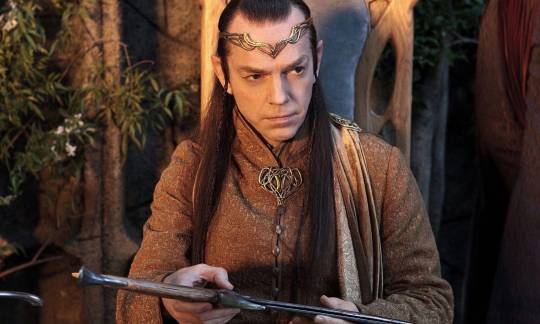
And after that, he hands it back. He and Gandalf don't say anything to each other about how it technically belonged to Elrond's grandfather. Elrond has a hefty claim on that sword through family inheritance alone, yet he says nothing about it.
Meanwhile this little shit:
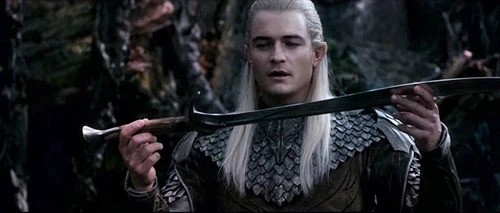

Legolas. Honey. You are actually the only elvish prince in all of Middle-Earth who has zero claim to that sword.
Gondolin was a Noldor city, and Turgon was a Noldor king of the line of Finwe. Legolas and Thranduil are Grey-elves, and as far as we know, they have no family connections to the Noldor. In fact the line of Thranduil is notable for being one of the only lines of elven royalty still in power who were never majority or partially Noldor. (Unless Legolas's dead mother was Noldo--but even so, it seems weird that she would be and this would have zero impact on Legolas, until the moment he sees a shiny and suddenly it's essential to his identity.)
And it's not as though Legolas doesn't know what it is. He identifies it on sight as being from Gondolin, and of Noldor make: "Echannen i·vegil hen vi·nGondolin - magannen nan·Gelydh."
I know that it's an elven sword being carried around by a bunch of dwarves. Legolas does have more ties to it than Thorin. But not that much more, and not anything close to Elrond.
It speaks to the themes of greed, worthiness, and legacy that are wrapped up in these films. As soon as Legolas sees that sword, it lights something in him that makes him suspicious of Thorin and the company--he desires it. Meanwhile Elrond has an actual claim on it, yet he doesn't voice that. He doesn't need it - for his own identity, or for his own use. It shows how much growing Legolas has to do, and how much Elrond has been through.
(P.S. - it also fascinates me that Glamdring is the famous sword that's shown, because Turgon wasn't exactly known for his fighting during the first age. He literally took all of his people and hid in Gondolin. He fought in the Nirnaeth Arnoediad, but he wasn't involved in the harrying of Morgoth and his forces to any serious extent before that or after. So why this sword? Why it, and not Maedhros or Fingon or Finrod's swords?)
28 notes
·
View notes
Text

Tsareena uses Charm! It's very effective against Ceruledge! (she/her for both)
#pokemon#tsareena#ceruledge#gijinka#pokemon gijinka#tsareena gijinka#ceruledge gijinka#wlw#wlw art#OC stuff#Krokoart#Pokemon art#Glamdring#Mango
10 notes
·
View notes
Text
Only been on Lotro for a little bit, as a mostly new character, Tuglin and already 2 players sent him a new sword, and a new bow because they saw my weapons sucked. :'( Very thankful to the kindness of this community!

3 notes
·
View notes
Text

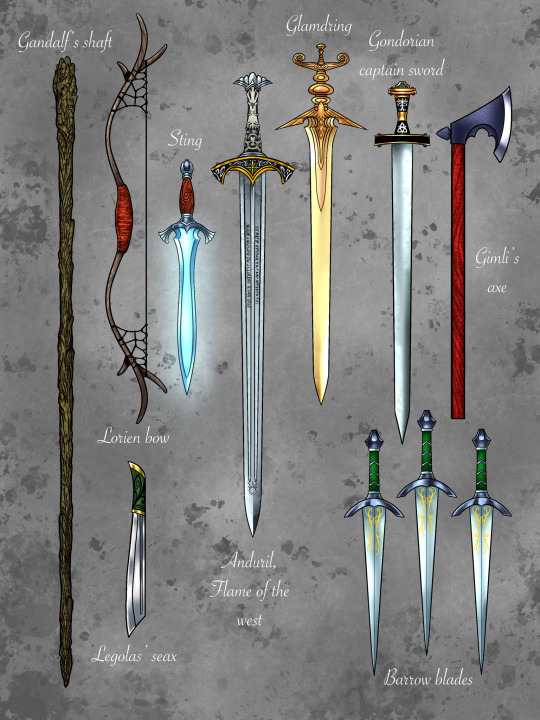
“Aragorn, king in exile”
Redesign for Aragorn, son of Arathorn, after leaving the country of Lorien, together with the main weapons of the fellowship of the ring.
#my art#digital art#artists on tumblr#digital painting#fanart#aragorn#strider#thorongil#estel#king elessar#dunedain#ranger#middle earth#gondor#anduril#flame of the west#sting#Glamdring
17 notes
·
View notes
Text
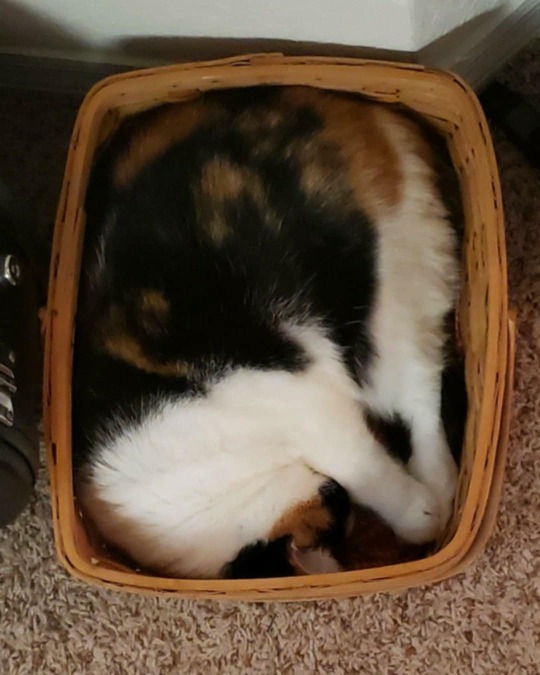
This basket has held so many contented kitties
3 notes
·
View notes
Text
Earendil has a dragon-horn bow
+ implications
In the poem named Earendil we have this part where Earendil is described before going to Valinor (timing is important for the following) :
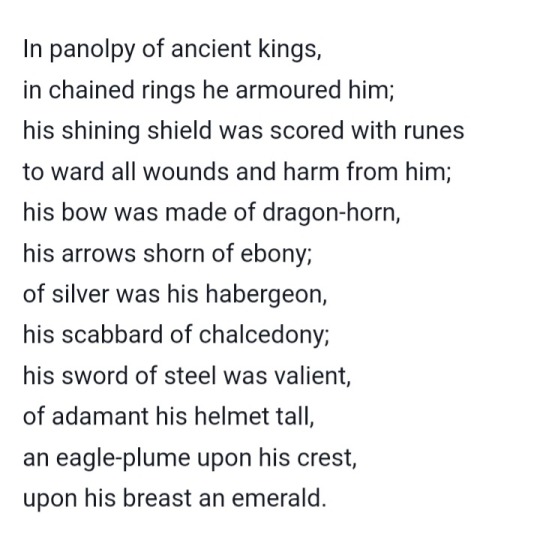
The fifth line gives us some informations :
Fact 1 : at least one bow made in dragon-horn exists.
Conclusion 1 : Tolkien's dragons have horns.
Fact 2 : this happens before the War of Wrath, before the releasing of winged dragons and Ancalagon. Dragons, at this time, were mentionned two times : Glaurung and wingless dragons of Gondolin.
So there is two theories (with multiple options) :
Theory 1 : someone looted Glaurung probably Haleth's people or sindar or wandering noldor.
Theory 2 : some wingless dragons were killed during the fall of Gondolin or at least some wingless dragons lost some horns during the battle. And someone had gone back to the fallen city and looted wingless dragons. We already know Gondolin was probably looted because of the presence of Glamdring (and Orcrist and Sting?) in the Hobbit/Lotr. So maybe dragon-horns were part of it.
Theory 2.1 : different looters were present maybe at different times. Loot was separated and some gone to the haven (dragon-horn) some gone to the wild (obscure path of Glamdring and co)
Theory 2.2 : only one group of looters but they were attaqued before giving away their butin. Pillard took all what was precious (swords and others) and let some unidentified objects (horns).
Theory 2.3 : Glamdring were inherited to some survivor before the fall of the city. Turgon fall without his sword. Then the sword was lost during some peripeties between the fall of the city and the departure of Earendil for Valinor.
Theory 2.4 : Glamdring were inherited before the battle. Earendil has it during some time but choose to give it to another elf before/during/after the war. This potentially requiere some contact between Earendil and elves/mortals after being in Valinor (with the silmaril upon his brow). Or he gave it to a messenger like Eonwë or Finarfin ?
Conclusion 2 : In any case, there is at least one legendary bow made in dragon-horn in Tolkien's world (And we haven't any name for it). You can add this to the dnd list of your Legendary weapons in Middle Earth.
Fact 3 : This poem is allegedly written by Bilbo. And everyone knows how Bilbo's stories are reliable.
Conclusion 3 : this description is a nonsense approved by Aragorn.
Link to history and how to confectionate horn bows in real life because it was really interesting !
#earendil#tolkien#too much thinking#silmarillion#kind of#it's a poem#dragon-horn bow#glamdring#orcrist#sting#some implications in the hobbit and lotr#and some Bilbo and Aragorn nonsense#lass#sorry for all english errors#lotr#because in fact this poem is published in it
6 notes
·
View notes
Text
"don't the great tales ever end?"
The endless carry over from the ancient history of Middle Earth (Silmarillion etc) to the last place Tolkien brings us in the story of the lands is always mind-blowing. You always find something new that's actually very old and some other connection to the past.
The fact that Frodo and Sam using the phial of Galadriel to fight Shelob is just a continuation of the story of the Silmarils. For Shelob's mother was Ungoliant who poisoned the trees, the trees whose light was held in the Silmarils. The light that ended up in the sky on Earendil's ship. The light of Earendil that is in the phial used to ward off the child of the monster that slew the trees.
The sword that smites the Balrog of Moria is found by chance in a troll hoard. But it was forged in Gondolin when Balrogs were much more of a concern. Any lesser sword would have failed to slay the Balrog.
Just like any lesser dagger than Sting would have failed to wound Shelob and cut through her webs.
There's dozens of moments like this throughout the works of Tolkien where the pattern of history in his world weaves in an essential piece from the past of his world. The great tales never truly end.
#tolkien#jrr tolkien#lord of the rings#lotr#the hobbit#gandalf#sauron#morgoth#balrog#hobbits#the silmarillion#silmarillion#light of Earendil#glamdring#sting#shelob#ungoliant#light of the trees#lights of valinor#valinor#Bilbo Baggins#frodo baggins#samwise gamgee#glorfindel#gondolin
80 notes
·
View notes
Text

Glamdring White Sword – The Legendary Blade of Gandalf! ⚔️
#LOTR ⚔️#Gandalf#Glamdring#LordOfTheRings#MiddleEarth#FantasySword#MovieReplica#TolkienFans#ElvenBlade#Hobbit#SwordCollection#LOTRMerch#CosplayWeapon#EpicFantasy#MedievalGear#CollectorSword#MagicalWeapon#LOTRFans#GandalfSword#FantasyArmory
2 notes
·
View notes
Text
Sword of the day (1/21/2025): Glamdring

The original prop by WETA Workshop, used in the Peter Jackson LOTR movies. There are no words in my mind for this sword. Or rather, there are too many words, and they're not the right ones. I'm not sure how to talk about Glamdring. I can tell you lots of things about it, of course. It's the sword Gandalf uses in The Hobbit and The Lord of the Rings. It is of elven make, once borne by Turgon king of Gondolin. It glows blue in the presence of orcs, who so fear it that they still remember its nickname ("Beater") many centuries after Turgon's death. Gandalf finds it in a troll cave, recognizing its great age and power despite its squalid surroundings. He learns from Elrond the sword's name ("Foehammer" in the common tongue), and carries it with him in all his travels thereafter - even into the depths of Moria. But that's not what I want to talk about. Not exactly, anyway. I read Tolkien's books religiously growing up. They were the loom on which my imagination took shape; they were the standard on which I based my conceptions of beauty and noble conduct. The Peter Jackson movies provided a natural extension for my mind's eye, giving concrete images and voices (God, the music!) to things once held only in half-pictured thought. (Not only in thought, I suppose. The copy of Lord of the Rings I had was illustrated by the late Alan Lee - his ethereal watercolors will forever be Middle-Earth to me. Even now I think of a foggy November morning, pale and grey over half-submerged reeds and grasping poplar branches, as "Tolkien weather".)
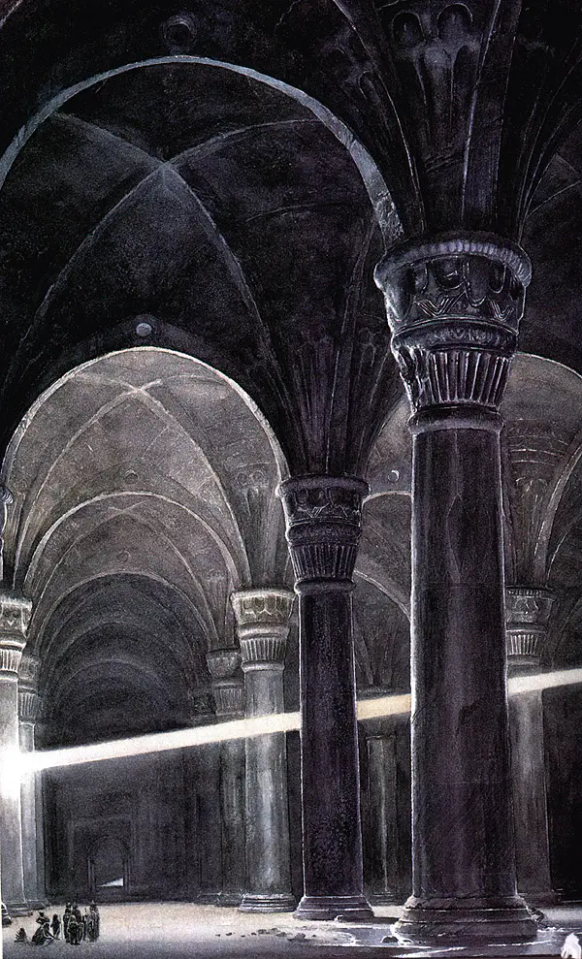
- Alan Lee, "Twenty-first Hall of Moria". Illustration for Book II, Chapter IV, "A Journey in the Dark." But the movies. If you've watched them at any point, you know the drill: Gandalf faces up against the balrog on Durin's Bridge, a narrow strip of stone suspended above a chasm that looks like it goes down forever. He looks tiny against the demon he's facing, and terribly human. Sword and staff in hand, he strikes the bridge and shatters it with with one last blaze of light. The balrog catches his leg. Glamdring clatters into the abyss, and he falls.
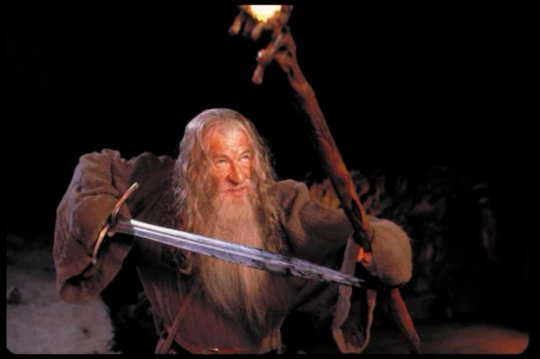
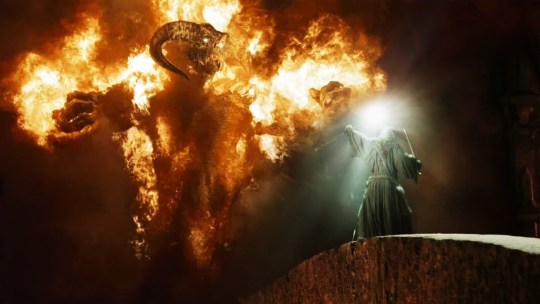
It's at this point that the first movie leaves Gandalf behind, and we have to wait until the opening sequence of The Two Towers for more. The scene plays out as before, this time with sweeping shots of the mountain above. Again Gandalf shatters the bridge; again he falls into the abyss with his enemy - but this time, we follow him. (If you haven't seen this sequence, it's well worth a watch. Or a rewatch. It's a good scene.) The plunge into the abyss is dizzying, claustrophobic. Gandalf tumbles, plucking Glamdring out of the air as it falls with a metallic scream - he drives it into his opponent, wizard and demon writhing in a violent freefall - ...and suddenly the void opens to receive them.
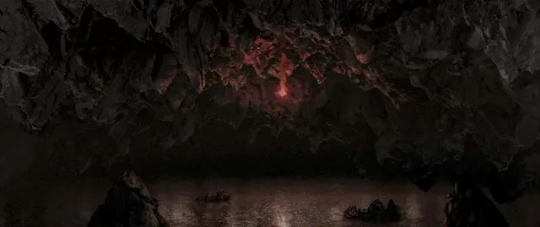
How do you describe something beautiful to someone who hasn't experienced it - or worse, to someone who experienced the same thing you did, and didn't realize the beauty of it? How do you express in conversation a joy which to you is unspoken and self-evident, precious simply by nature? Looking back with a decade of extra vocabulary and life experience behind me, I might describe the moment as a star falling to earth, sacred and profane light joined in deadly union. I might point out that Gandalf and the Balrog are both Maiar, the in-world equivalent of an angel and a demon doing battle - or that Glamdring's last known place of service before Gandalf was in the Battle of Unnumbered Tears, a battle in which balrogs marched in numbers against the free peoples of Middle-Earth. I might even draw from my religious studies, comparing Gandalf's fall to the Incarnation or Christ's descent into Hades! I didn't have words for any of that when I first watched the movie. So I just cried.


Glamdring (WETA workshop) Length: 117 cm (46") Width: 26 cm (10 1/4") Depth: 4 cm (1 1/2") Weight: ~1-1.75 kg? (I couldn't find good numbers on this)
https://propstoreauction.com/lot-details/index/catalog/318/lot/95103
https://tolkiengateway.net/wiki/Glamdring
https://tolkiengateway.net/wiki/Nirnaeth_Arnoediad
3 notes
·
View notes
Text
So one detail that is really, really sad about both the Hobbit and Lord of the rings, that is there from day one always hoovering over the narrative, but is never really explained, is the sad story of Sting, Glamdring and to a lesser extent Orcrist.
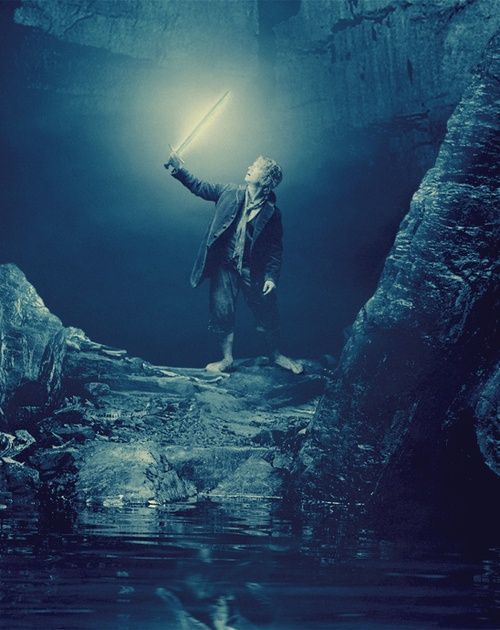
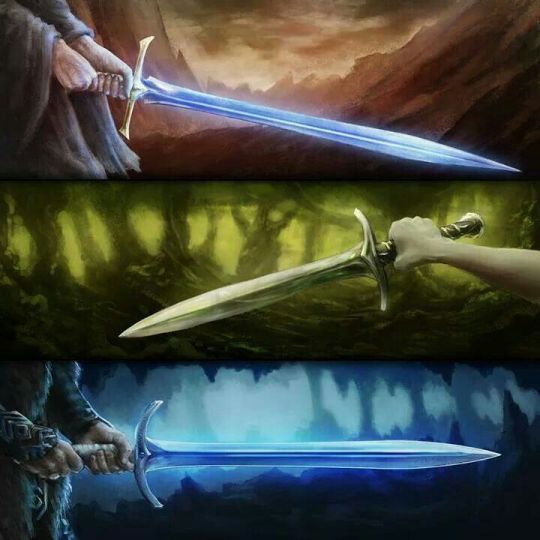

These weapons glow blue in the pressence of Orcs.
Its a detail that's never explained beyond the fact that it's because it's Elven weaponry from fallen Gondolin.
But we're never explained why only these out of all the elven made equipment in the franchise glows like this.

Clearly it was something unique to the Gondolinian smiths, and so you'd be forgiven for thinking on a first delving into the deeper legendarium, that it was snuffed out with the city itself, when Morgoth's forcea sacked it with Orcs, balrogs, dragons and early mechanical troop carriers.
A wonderous and in it's own way beautiful little bit of magic, lost to the world forever.
But no, that's not quite it.

While it was the sack of Gondolin that killed most of it's people, there was still hope for some sort of recovery for it's people, the true treasure of fair Gondolin that truly mattered...
But that hope was snuffed out by the sons of Feanor, when they assaulted the havens where the survivors of this genocide and many others had gathered and wiped almost all of them out.
In thw end, if there was any amongst them that knew the secret for how to make the blue glowing steel, it died here, where this attrocity took place and Elf killed elf on large scale for the third time, for the pettiest and most selfish of reasons.
Leaving Sting, Glamdring and Orcrist and those few other weapons from the city to survive as the last memorials to a dead and gone culture, the last children of a culture that Feanor's brood snuffed out in a slaughter.
#tolkien's legendarium#sting#glamdring#orcrist#the hobbit#lord of the rings#the silmarillion#swords#gondolin#the sack of gondolin#the third kinslaying#sons of feanor
14 notes
·
View notes